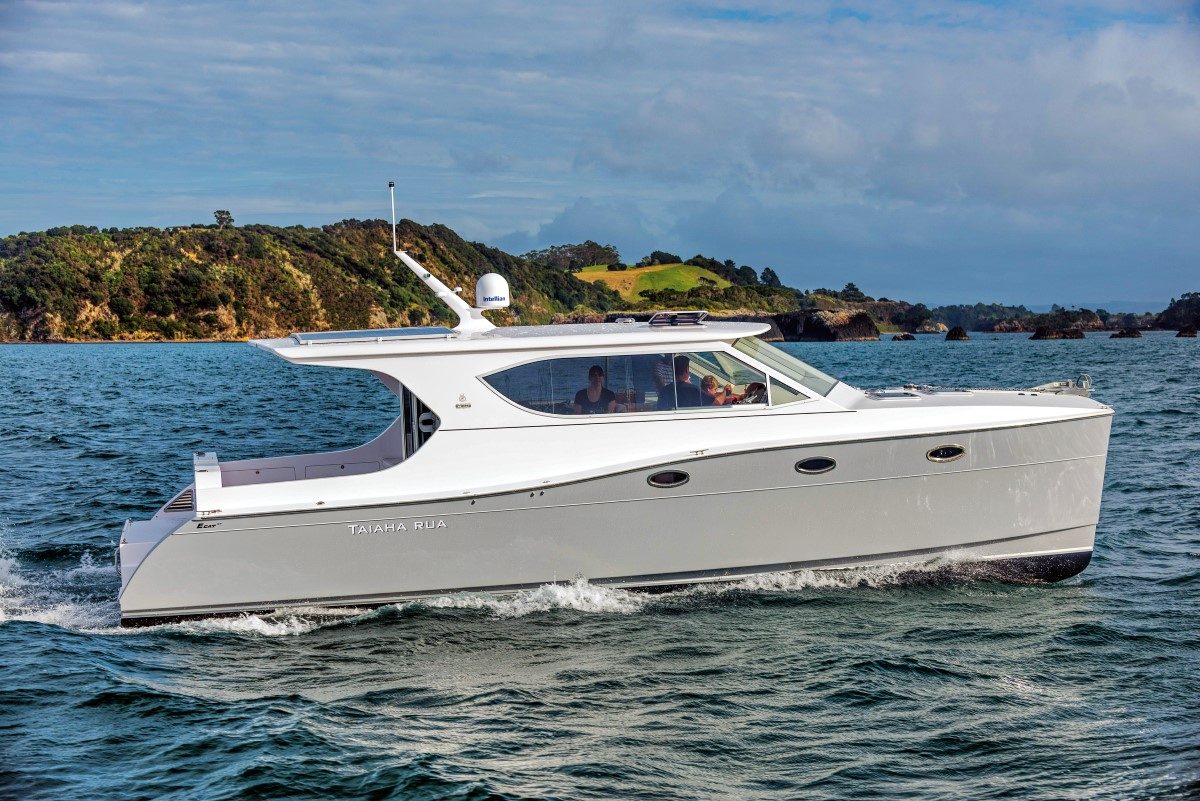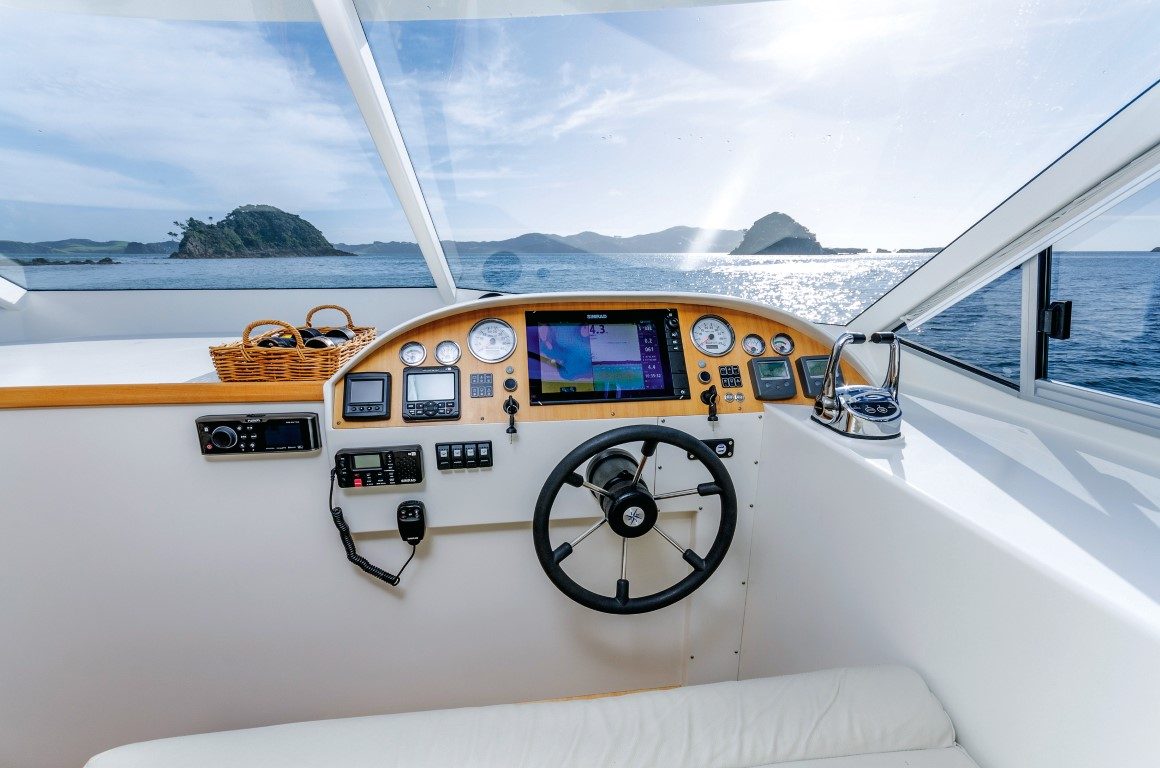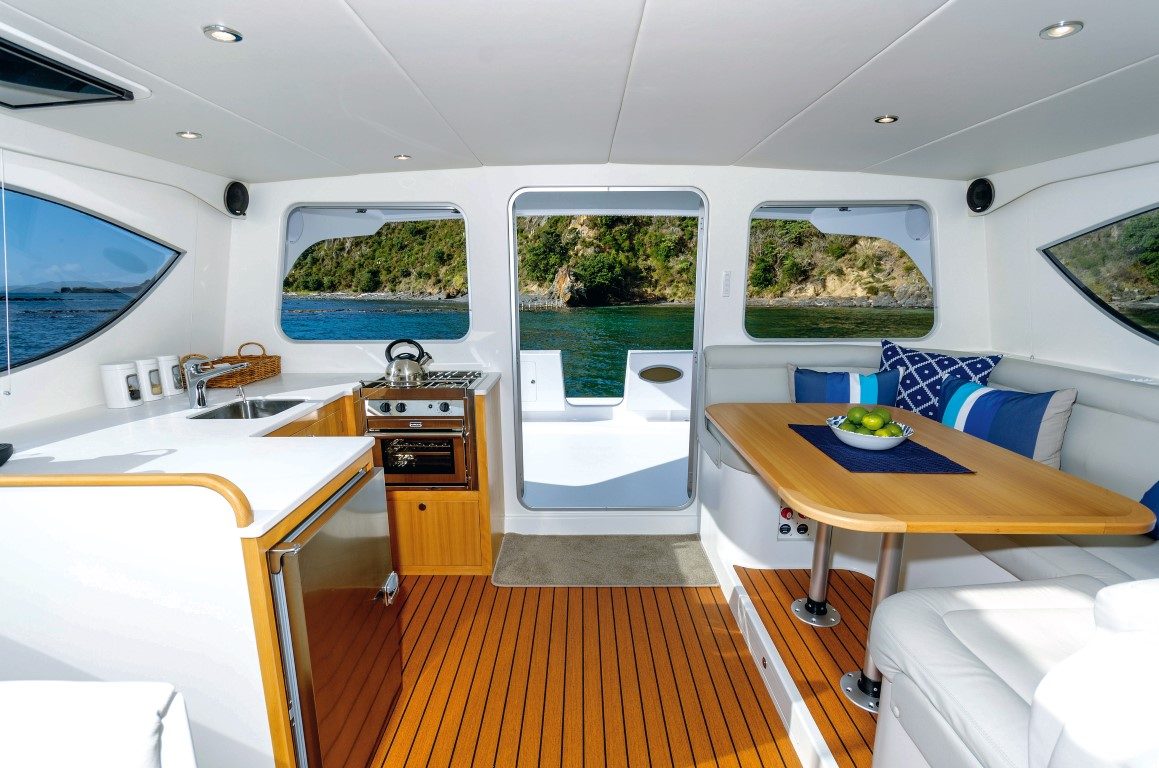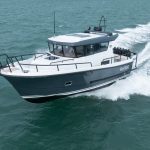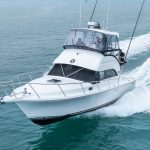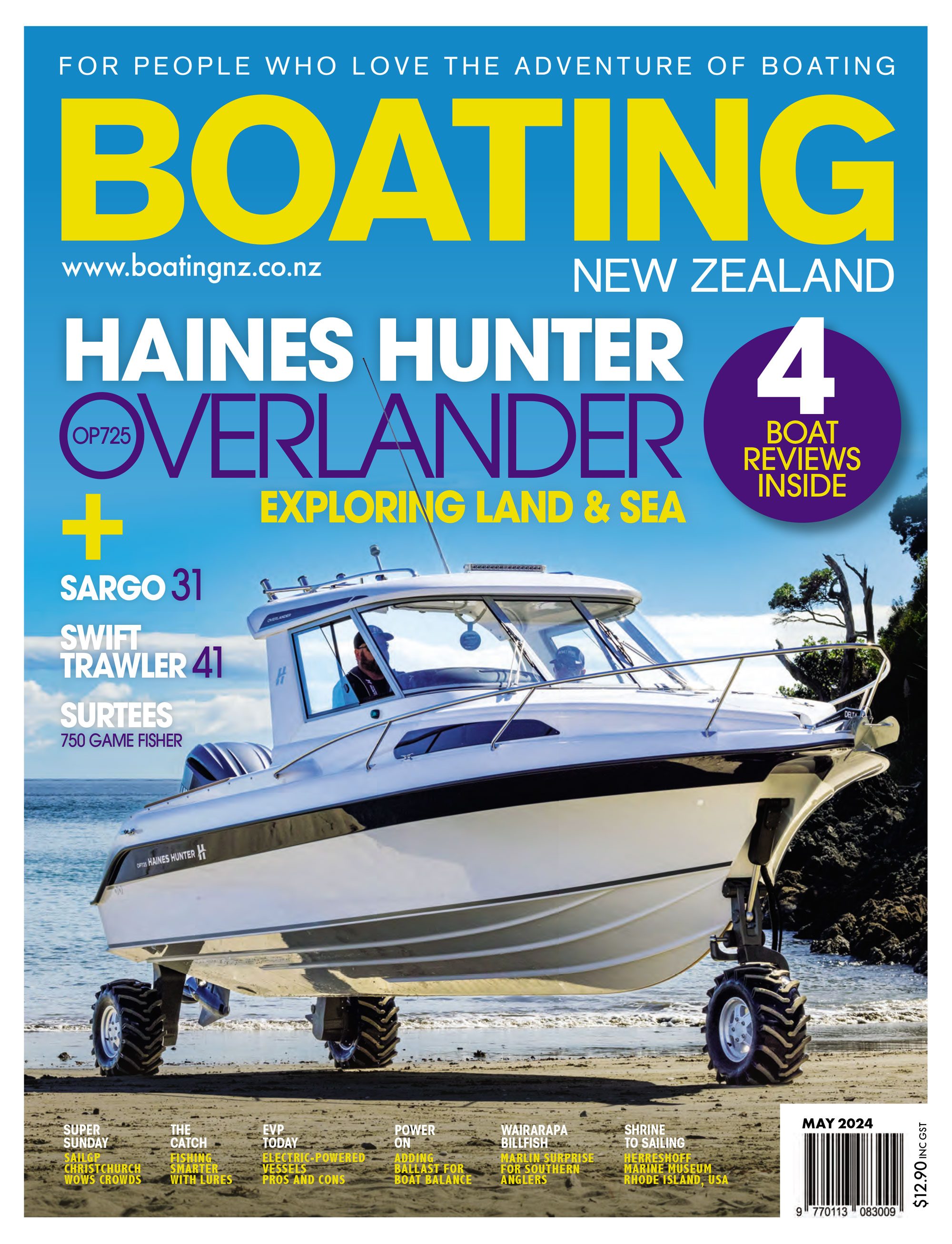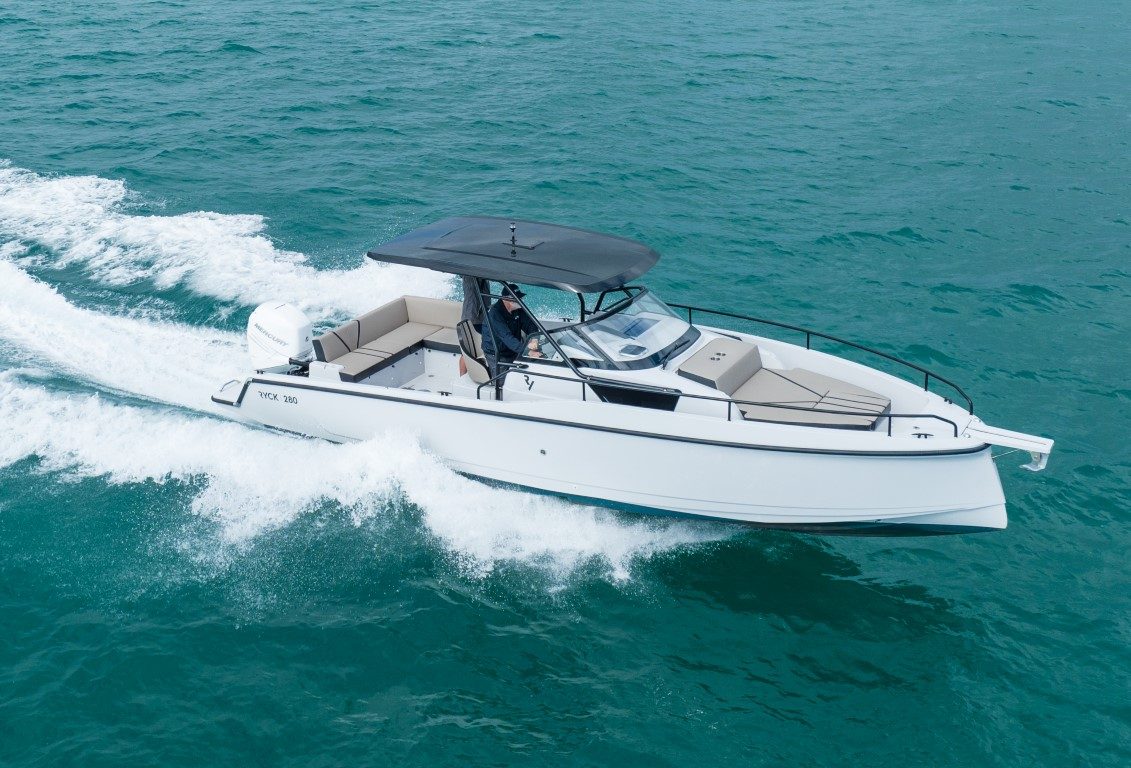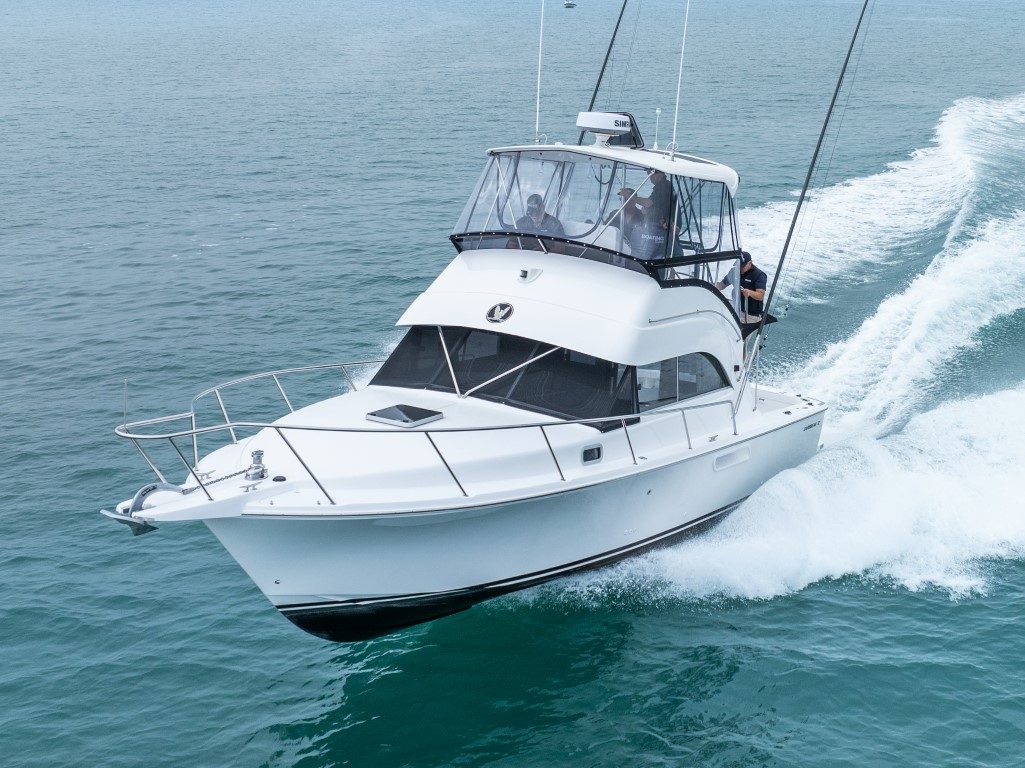She feels really easy and comfortable to sail, even in a good breeze and a chop.
- A good sea boat
- Fuel efficient
- Modest power
- Lightweight carbon fibre components
- Cruises at 14.5 knots
- Simple layout
- Solar keeps batteries charged
- Panoramic views from saloon
- Fishing friendly


